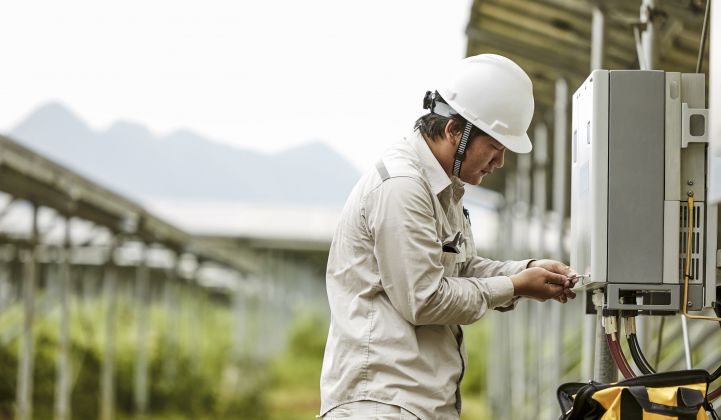JinkoSolar, the largest global producer of solar modules, marked a “turning point” in the third quarter of 2019, nearing the last step of its transition to monocrystalline wafer capacity, which is becoming the industry standard. The Chinese manufacturer said it will expand the 11.5 gigawatts of mono wafer capacity it will have as of the end of 2019 to 18 gigawatts by Q2 2020.
With its shift to mono nearly complete, the company says it's well positioned to take advantage of a rebound in Chinese demand (projects delayed in Q3 due to policy uncertainty should carry into Q4 and Q1 2020) and the proliferation of global renewables policies.
“With domestic demand rebounding strongly and overseas demand driven by grid parity and aggressive clean energy targets, we expect the fourth quarter to be a big quarter for us,” said CEO Kangping Chen on the company’s Tuesday earnings call.
In Q4, Jinko expects to ship between 4.2 and 4.4 gigawatts of modules, compared to 3.3 gigawatts in Q3 and around 3.4 gigawatts in Q2.
China's delayed announcement of its 2019 subsidy policies weakened demand in the world’s largest solar market this year, but Jinko was still able to log record gross profit in Q3 at $223 million, which it attributed in part to its shift toward mono. Operating income jumped nearly 150 percent from Q2, landing at $89.4 million. In response, shares climbed nearly 11 percent on Tuesday, closing at $16.44.
Nearly three-quarters of Jinko’s module shipments are now mono, a percentage that will approach 100 percent in 2020. Looking into next year, Jinko plans to ship 18 to 20 gigawatts — 35 percent year-over-year growth — driven by opportunities outside China.
The U.S. is one market where demand “remains very strong," executives said, and the manufacturer touched on plans to expand its 20 percent market share in the U.S. With a new membership position on the Solar Energy Industries Association board and a favorable ruling from the U.S. International Trade Commission following a legal spat with competitor Hanwha Q Cells, the company is enjoying some tailwinds in the U.S., where it opened a factory earlier this year.
At home, Jinko expects China to push forward delayed 2019 projects and add 40 gigawatts of new capacity in 2020. Executives predicted the government would offer clarity on 2020 subsidy policies within the next two months.
Taken together, the company painted a positive portrait of global demand.
“With the cost of solar energy now falling below that of conventional energy sources in many markets across the globe, and more aggressive clean energy targets being set by governments, we are also very confident and optimistic that global demand will significantly increase" in 2020, said Chen. “We currently estimate that global installations next year will be approximately 20 percent higher than this year."
To help meet that demand, Jinko plans to add 500 megawatts of mono wafer capacity before the end of 2019 to its current 11 gigawatts, while ramping solar cell capacity from 9.2 gigawatts to 10.6 gigawatts and adding 1 gigawatt of module production capacity to reach 16 gigawatts.
By the end of the year, Jinko will account for 12 percent of global mono wafer capacity, compared to Longi's nearly 40 percent, and 33 percent for Tianjin Zhonghuan Semiconductor, the company that recently invested in SunPower split-off Maxeon.




